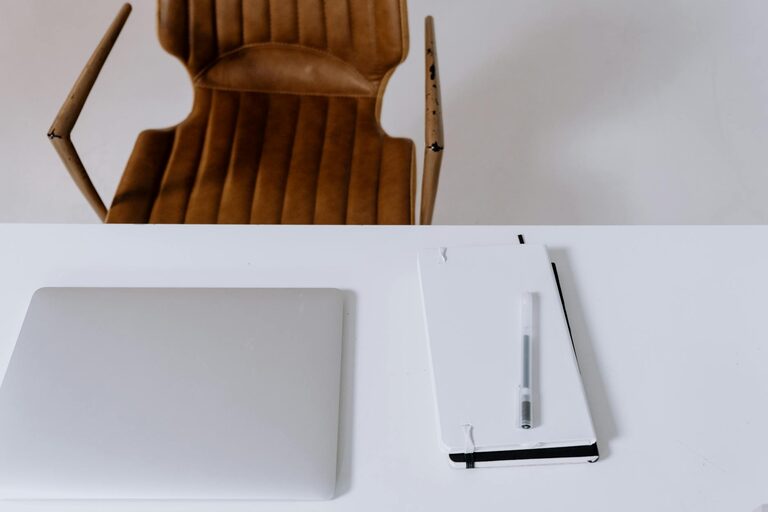Creating a workspace that promotes both focus and comfort can make a significant difference in your productivity and overall well-being. Whether you’re working from home, at the office, or a creative studio, the way your desk is arranged impacts how effectively you concentrate and how comfortable you feel throughout the day.
In this post, we’ll explore practical desk setup tips designed to enhance focus and comfort. From ergonomic essentials to organizing strategies, these ideas will help you create an environment that supports your work and health.
Why Desk Setup Matters
Your desk is more than just a place to put your computer and papers. It’s the foundation of your work environment. A poor setup can lead to discomfort, distractions, and even physical strain. On the other hand, a well-thought-out workspace encourages good posture, reduces fatigue, and helps maintain mental clarity.
Key Elements for a Focused and Comfortable Desk Setup
1. Choose the Right Desk and Chair
The foundation of a comfortable setup begins with furniture choices:
– Desk height: Your desk should allow your forearms to rest parallel to the floor while typing. This usually means the desk height should be around 28-30 inches, but it depends on your body.
– Adjustable chair: Invest in an ergonomic chair with adjustable height, back support, and armrests. A chair that supports the natural curve of your spine reduces back and neck strain.
– Desk space: Make sure you have enough surface area for your essential items without cluttering your workspace.
2. Optimize Monitor Placement
Proper monitor positioning can prevent eye strain and promote good posture:
– Eye level: The top of your monitor screen should be at or just below eye level. This encourages a slight downward gaze.
– Distance: Place the monitor about an arm’s length away from you (roughly 20-30 inches).
– Dual monitors: If you use two screens, position them at a slight angle so you can view both comfortably without excessive neck turning.
3. Prioritize Ergonomics
Ergonomics is about fitting your workspace to your body:
– Keyboard and mouse: Keep your keyboard and mouse close enough so you don’t have to stretch. Your wrists should remain straight and relaxed.
– Foot support: Your feet should be flat on the floor or on a footrest to avoid pressure on your legs.
– Posture reminders: Consider using a posture app or reminder to maintain a healthy sitting position throughout the day.
4. Declutter and Organize
A clean and organized desk reduces mental distractions:
– Minimalism: Keep only essential items on your desk.
– Storage: Use desk organizers, trays, or drawers to store supplies out of sight.
– Cable management: Tidy up cords with clips or sleeves to prevent tangling and mess.
5. Manage Lighting Effectively
Lighting affects both your focus and comfort:
– Natural light: Position your desk near a window for natural light, but avoid direct glare on your screen.
– Task lighting: Use a desk lamp with adjustable brightness to supplement ambient light and reduce eye strain.
– Color temperature: Opt for neutral white light (4000-5000K) for work areas to maintain alertness.
6. Incorporate Comfort Accessories
Small touches can add significant comfort:
– Wrist rest: Soft wrist supports for keyboard and mouse can reduce strain.
– Ergonomic accessories: Items like a monitor stand or laptop riser help maintain proper posture.
– Comfort items: A soft cushion, lumbar pillow, or even noise-cancelling headphones can boost comfort and focus.
7. Personalize Thoughtfully
Adding a few personal touches can make your workspace inviting, but keep distractions minimal:
– Plants: Small indoor plants improve air quality and create a calming vibe.
– Inspirational items: Photos or artwork that inspire you can boost motivation.
– Aroma: Consider subtle scents like lavender or citrus to help concentration (avoid overpowering fragrances).
Daily Habits to Support Your Desk Setup
Your setup is only part of the solution. Maintain your focus and comfort by:
– Taking regular breaks: Stand, stretch, or walk every 30-60 minutes to avoid stiffness.
– Adjusting your position: Change sitting positions occasionally and use a sit-stand desk if possible.
– Staying hydrated: Drink water throughout the day to maintain energy.
Conclusion
A thoughtfully arranged desk can greatly enhance your ability to focus and stay comfortable during work. By focusing on ergonomics, organization, lighting, and a few personal touches, you can create a productive and pleasant workspace that supports your daily tasks.
Try implementing some or all of these desk setup tips to transform your work environment. Small changes can lead to big improvements in how you feel and perform at your desk!

